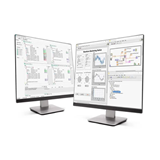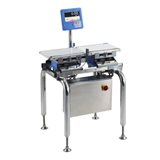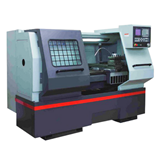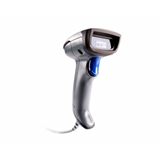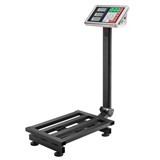National Measurement Institute
Important milestones
1908
The Commonwealth appointed the first Commonwealth Analyst and established the Commonwealth Laboratories under the Department of Trade and Customs. Their function was to provide the laboratory services necessary to support excise collection and impose tariffs on imported goods. The laboratories' tasks quickly broadened to include meat inspection, food analysis and other work.
1926
The Council for Scientific and Industrial Research (CSIR) was established. Among its powers and functions were the "testing and standardisation of scientific apparatus and instruments" and other activities related to standards and measurement.
1938
Cabinet approved the establishment of the National Standards Laboratory (NSL), to be built on a site in the grounds of the University of Sydney.
1940
NSL staff began work in the partially completed building in the university grounds.
1947
Australia became a signatory to the Metre Convention (Convention du Mètre).
1947
The Food Control Laboratories, set up during World War II, became part of the Commonwealth Laboratories, which thereby took on responsibility for microbiological work.
1948
The Weights and Measures (National Standards) Act 1948 came into effect. It provided for the creation of the National Standards Commission.
1949
The Commonwealth Scientific and Industrial Research Organisation (CSIRO) replaced CSIR.
1950
The National Standards Commission was appointed to administer weights and measures legislation.
1950-1970
The scope of the Commonwealth Laboratories work broadened, taking on significant workloads from the departments of Primary Industries and Health.
1960
The Weights and Measures (National Standards) Act 1948 was replaced by the National Measurement Act 1960, which defined Australia's units and standards of measurement and the roles of the National Standards Commission and CSIRO in Australia's system of weights and measures.
1965
The National Standards Commission was given responsibility to pattern approve measuring instruments used for trade.
1973
The Commonwealth Laboratories became the Australian Government Analytical Laboratories (AGAL) and were attached to the Department of Science.
1974
NSL was renamed the National Measurement Laboratory (NML) following a reorganisation within CSIRO.
1978
NML moved to a new site at Lindfield.
1987
AGAL was transferred to the Department of Administrative Services.
1997
AGAL became part of the Department of Industry, Science and Tourism now Industry, Tourism and Resources.
1997
The National Analytical Reference Laboratory was established within AGAL in response to the increasing need for chemical metrology standards and international activity in this field.
1999
The National Standards Commission was given responsibility for pattern approval and compliance testing of electricity, gas and water meters.
2000
The Chief Scientist, Dr Robin Batterham, recommended in his report The Chance to Change that a National Measurement Institute be established comprising AGAL, NML and the National Standards Commission.
2003
The Minister for Industry, Tourism and Resources, the Hon Ian Macfarlane MP, announced that the National Measurement Institute would be established.
2004
Formation of the National Measurement Institute.
History of metric conversion
In 1947 Australia signed the Metre Convention making metric units legal for use in Australia, and in 1970 passed the Metric Conversion Act with the aim of making the metric system the sole system of legal measurements in Australia.
The responsibility for advising the Government on the scientific, technical and legislative requirements of Australia’s national measurement system and for coordinating the system rests with NMI.
1901
The first step towards metrication in Australia was taken during the term of the first Parliament after Federation. It was moved that Australia consider the adoption of the metric units of weights and measures.
1947
Australia signed the Metre Convention which made metric units legal for use in Australia.
1970
The Metric Conversion Act was passed and received Royal Assent. The Metric Conversion Board was established and Australia commenced the change to metric units.
1971
The Australian wool industry converted to the SI system.
1972
The packaging of grains, dairy products and eggs went metric and the SI system was introduced to primary school education.
1973
The SI system was introduced to secondary school education. There was also conversion of the packaging of some small goods, e.g. tobacco, sugar and peanuts. Also the tanning industry underwent conversion.
1974
By the end of 1974 most industries in Australia had converted to metric, e.g. building, timber, paper, printing, agricultural and veterinary chemicals, meteorological services, photography, postal and communication charges, road transport, travel, textiles, gas, electricity, land and surveying, sport and recreation, water and sewerage, mining, metallurgy, rubber, chemicals, petroleum derivatives, fabricated metal products, automotive engineering, all beverages apart from spirits, ship building and aeronautical engineering.
1976
By the end of 1976, all packaged goods were required to be labelled in metric sizes, and the following were also converted to metric: the air transport industry, food energy, petrol pumps, machine tools, electronic and electrical engineering appliance manufacturing.
1981
The Metric Conversion Board was dissolved.
1984
Responsibility for the completion of metrication was transferred to the National Standards Commission.
1987
Real estate dealings went metric.
1988
Withdrawal of remaining imperial units from general legal use.
Significant achievements:
- Redefinition of the metre
- The calculable capacitor
- Gravitational acceleration
- Search for an atomic kilogram
- Absolute determination of the volt
- Redefinition of the candela



